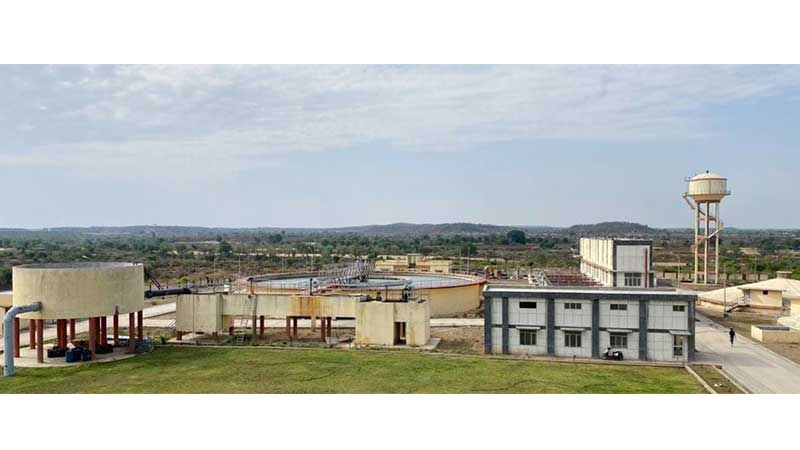
Water is vital for life but it is a finite resource. We cannot produce more water to cater the increasing demand or completely use up the current supply. The earth’s water resources exist either in the form of oceanic salt water, is frozen, or trapped underground. In fact, out of 2.5% fresh water available, only about 1% of the world’s total water supply is usable as drinking water for human consumption, rest remain locked in glaciers and snowfields. With the world’s population continually growing, the quest for innovative sources of water is quickly becoming our greatest challenge.
If current trends continue, India is set to become a water scarce country in not too distant future. The scarcity is looming large on Indian cities and water utilities are facing their biggest challenge from aging infrastructure across the country. One of the most critical aspects of the aging infrastructure is literally buried underground, out of sight and out of mind. When failures occur, then only we are reminded of how much we take our water for granted. The water supply to household and businesses depends on a network of aging underground pipes, many of which are reaching, or have exceeded, the end of their useful life. The pumping machineries are dilapidated and number of water main breaks frequently.
In the past century, people have steadily moved from rural to urban areas to improve their standard of living as well as quality of life. In 1901, only 11% of India’s population was urban. A century later, over 34% of people are living in urban settlements which are expected to grow further to reach 60% in urban areas by the year 2050. A rapidly increasing urban population and the expanding middle class have driven up water demand, while years of pollution, inefficient farming, decentralized governance, groundwater exploitation and poor infrastructure have depleted the water supply.
There are several challenges being faced by water utilities in India, but ageing infrastructure is at the root of them all. In particular, urbanization and population growth contribute to water scarcity and intensify the strain caused by ageing infrastructure. Among other key challenges is the problem of water loss or non-revenue water. Global non-revenue water estimates ranges from 20% to 40% of water produced depending upon the country, whereas it is as high as 50% to 60% in several cities in India. In some smaller countries like Singapore, Israel, Denmark, Netherlands, they all have managed to get their water losses at less than 10% which is worth following by our large cities.
Water utilities in India are faced with the need to address all of these challenges and revamping of infrastructure on priority for social, economic and environmental implications. For decades, we have invested heavily in fossil fuels – coal, oil, gas, and their derivative chemicals and plastic with little or no concern for consequences that today are evident in the form of pollution in water-we cannot drink, air-we cannot breathe, toxic environment around us and our failure to manage by-products and waste. In earlier days, we responded through a number of regulations, laws, and international treaties for water and made some progress in limiting and mitigating the consequences. Those restrictions, even the alternative strategies to replenish and recycle the resources are weakening and we are again returning to old values, policies, and behaviors which were considered obsolete and not relevant. Water utilities in India are now tasked with the job of attempting to conserve a previously unregulated natural resource as it quickly becomes a politicized source of contention for different groups within society.
This is an issue that needs urgent attention from policy makers, relevant government officials, private partners and people, especially in cities where urbanization have become a more serious problem. While urbanization is a very important consideration which all developing countries need to manage efficiently, a significant number of cities in India is witnessing rapid population growth and utilities are finding they have constructed much lesser infrastructure than they needed. We need to develop water and wastewater sustainability policy that has to promote sustainable infrastructure in the water sector. The policy’s objective should be to ensure that all investments, policies and actions support water infrastructure in most efficient and maintainable manner to help water utilities enhance economic competitiveness and promote affordable operation & maintenance.
SPML Infra has been promoting access of clean drinking water to all with sustainable water infrastructure development for more than three decades and has executed over 600 projects in water and wastewater segments along with other key development. Being a leading player in Indian water sector, it continuously features amongst the world’s top 50 private water companies. With a number of water infrastructure development and key executed projects, it is providing drinking water facilities to over 50 million people across several states in India.
Key Initiatives
In view of the challenges that the water resources sector and water utility services in our country is facing, the Government of India has taken numerous steps to address the issue, while emphasizing on the use of technology for the purpose. Previously, water was a subject which was dealt by almost nine Ministries. The present government has integrated the work of these various Ministries and brought them under one Ministry of Jal Shakti. Hon’ble Prime Minister has also set a revolutionary goal of bringing piped drinking water to all households both in urban and rural India with a huge outlay of Rs. 6.47 lakh crore. Apart from this flagship drinking water supply scheme, government has also initiated a number of water resource management, wastewater treatment, irrigation and rain water harvesting programs with dedicated budgets to address the water scarcity issues and make water available for our future. These initiatives will also play a big role in economic and social development and making India a 5 trillion-dollar economy.